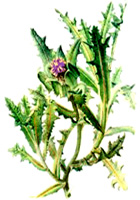Is an effective vaccine already available against the new influenza A(H1N1) virus?
No, but work is already under way to develop such a vaccine. Influenza vaccines generally contain a dead or weakened form of a circulating virus. The vaccine prepares the body’s immune system to defend against a true infection. For the vaccine to protect as well as possible, the virus in it should match the circulating “wild-type” virus relatively closely. Since this H1N1 virus is new, there is no vaccine currently available made with this particular virus. Making a completely new influenza vaccine can take five to six months.
What implications does the declaration of a pandemic have on influenza vaccine production?Declaration by WHO of phase 6 of pandemic alert does not by itself automatically translate into a request for vaccine manufacturers to immediately stop production of seasonal influenza vaccine and to start production of a pandemic vaccine. Since seasonal influenza can also cause severe disease, WHO will take several important considerations such as the epidemiology and the severity of the disease when deciding when to formally make recommendations on this matter. In the meantime, WHO will continue to interact very closely with regulatory and other agencies and influenza vaccine manufacturers.
How important will influenza A(H1N1) vaccines be for reducing pandemic disease?Vaccines are one of the most valuable ways to protect people during influenza epidemics and pandemics. Other measures include anti-viral drugs, social distancing and personal hygiene.
Will currently available seasonal vaccine confer protection against influenza A(H1N1)?The best scientific evidence available today is incomplete but suggests that seasonal vaccines will confer little or no protection against influenza A(H1N1).
What is WHO doing to facilitate production of influenza A(H1N1) vaccines?As soon as the first human cases of new influenza A(H1N1) infection became known to WHO, the WHO Collaborating Center in Atlanta (The Centers for Disease Control and Prevention (CDC) in the United States of America) took immediate action and began the work to develop candidate vaccine viruses. WHO also initiated consultations with vaccine manufacturers worldwide to facilitate the availability of all necessary material to start production of influenza A(H1N1) vaccine. In parallel, WHO is working with national regulatory authorities to ensure that the new influenza A(H1N1) vaccine will meet all safety criteria and be made available as soon as possible.
Why is WHO not asking vaccine manufacturers to switch production from seasonal vaccine to a influenza A(H1N1) vaccine yet?WHO has not recommended stopping production of seasonal influenza vaccine because this seasonal influenza causes 3 million to 5 million cases of severe illness each year, and kills from 250 000 to 500 000 people. Continued immunization against seasonal influenza is therefore important. Moreover, stopping seasonal vaccine production immediately would not allow a pandemic vaccine to be made quicker. At this time, WHO is liaising closely with vaccine manufacturers so large-scale vaccine production can start as soon as indicated.
Is it possible that manufacturers produce both seasonal and pandemic vaccines at the same time?There are several potential options which must be considered based on all available evidence.
What is the process for developing a pandemic vaccine? Has a vaccine strain been identified, and if so by whom?A vaccine for the Influenza A(H1N1) virus will be produced using licensed influenza vaccine processes in which the vaccine viruses are grown either in eggs or cells. Candidate vaccine strains have been identified and prepared by the WHO Collaborating Center in Atlanta (The Centers for Disease Control and Prevention (CDC) in the United States of America)1. These strains have now been received by the other WHO Collaborating Centers which have also started preparation of vaccine candidate viruses. Once developed, these strains will be distributed to all interested manufacturers on request. Availability is anticipated by mid-May.
How quickly will influenza A(H1N1) vaccines be available?The first doses of Influenza A(H1N1) vaccine could be available in five to six months from identification of the pandemic strain. The regulatory approval will be conducted in parallel with the manufacturing process. Regulatory authorities have put into place expedited processes that do not compromise on the quality and safety of the vaccine. Delays in production could result from poor growth of the virus strain used to make the vaccine.
How would manufacturers be selected?There are currently more than a dozen vaccine manufacturers with licenses to produce influenza vaccines. Upon request, the vaccine strain will be available to each of them, as well as to other qualified vaccine manufacturers who are preparing to make influenza vaccine but do not yet have a licensed influenza vaccine.
What is the global manufacturing capacity for a potential influenza A(H1N1) pandemic vaccine? Is this the same as the global manufacturing capacity for H5N1?The projections made for the production capacity of an vaccine for H5N1 cannot be automatically assumed to be the capacity to make an H1N1 vaccine. H5N1 and H1N1 viruses are different and the amount of antigen needed to make an effective H1N1 vaccines may be different than for H5N1. Therefore it is not possible to make a precise estimate. However, given these considerations, a conservative estimate of global capacity is at least 1 to 2 billion doses per year.
How is production capacity for influenza vaccines distributed geographically? More that 90% of the global capacity today is located in Europe and in North America. However, during the past five years, other regions have begun to acquire the technology to produce influenza vaccines. Six manufacturers in developing countries have done so with technical and financial support from WHO.
What will be the storage requirements for influenza A(H1N1) vaccine?The vaccine should be stored under refrigerated conditions at between 2°C and 8°C.
It has been impossible so far to develop vaccines for major killers such as HIV and malaria. How sure are we that there will not be scientific or other hurdles in developing an effective influenza A(H1N1) vaccine?Typically, development of influenza vaccines has not posed a problem. Influenza vaccines have been used in humans for many years and are known to be immunogenic and effective. Each year seasonal influenza vaccines with varying composition are produced for the northern and southern hemisphere influenza seasons. Vaccine manufacturers will employ a number of different technologies to develop their vaccines. They will take advantage, notably, of novel approaches that were developed over the past years for H5N1 avian influenza vaccines. One key unknown is yield of vaccine virus production, since some strains grow better than others and the behavior of the new influenza A(H1N1) strain in manufacturers’ systems is not yet known. New recombinant technologies are under development, but have not yet been approved for use.
Will influenza A(H1N1) vaccines be effective in all population groups?There are not data on this but there also is no reason to expect that they would not, given current information.
Will the influenza A(H1N1) vaccine be safe?Licensed vaccines are held to a very high standard of safety. All possible precautions will be taken to ensure safety of new influenza A(H1N1) vaccines.
How can a repeat of the 1976 swine flu vaccine complications (Guillain-Barré syndrome) experienced in the United States of America be avoided?Guillain-Barré syndrome is an acute disorder of the nervous system. It is observed following a variety of infections, including influenza. Studies suggest that regular seasonal influenza vaccines could be associated with an increased risk of Guillain-Barré syndrome on the order of one to two cases per million vaccinated persons. During the 1976 influenza vaccination campaign, this risk increased to around 10 cases per million vaccinated persons which led to the withdrawal of the vaccine.
Pandemic vaccines will be manufactured according to established standards. However, they are new products so there is an inherent risk that they will cause slightly differently reactions in humans. Close monitoring and investigation of all serious adverse events following administration of vaccine is essential. The systems for monitoring safety are an integral part of the strategies for the implementation of the new pandemic influenza vaccines. Quality control for the production of influenza vaccines has improved substantially since the 1970s.
Will it be possible to deliver new influenza A(H1N1) vaccine simultaneously with other vaccines?Inactivated influenza vaccine can be given at the same time as other injectable vaccines, but the vaccines should be administered at different injection sites.
If the virus causes a mild pandemic in the warmer months and changes into something much more severe in, say, 6 months, will vaccines being developed now be effective?
It is too early to be able to predict changes in the influenza A(H1N1) virus as it continues to circulate in humans or how similar a mutated virus might be to the current virus. Careful surveillance for changes in the influenza A(H1N1) virus is ongoing. This close and constant monitoring will support a quick response should important changes in the virus be detected.
Will there be enough influenza A(H1N1) vaccine for everyone?The estimated time to make enough vaccine to vaccinate the world's population against pandemic influenza will not be known until vaccine manufacturers will have been able to determine how much active ingredient (antigen) is needed to make one dose of effective influenza A(H1N1) vaccine.
In the past two years, influenza vaccine production capacity has increased sharply due to expansion of production facilities as well as advances in research, including the discovery and use of adjuvants. Adjuvants are substances added to a vaccine to make it more effective, thus conserving the active ingredient (antigen).
What is WHO's perspective on fairness and equity for vaccine availability?
The WHO Director-General has called for international solidarity in the response to the current situation. WHO regards the goal of ensuring fair and equitable access by all countries to response measures to be among the highest priorities. WHO is working very closely with partners including the vaccine manufacturing industry on this.
Who is likely to receive priority for vaccination with a future pandemic vaccine?This decision is made by national authorities. As guidance, WHO will be tracking the evolution of the pandemic in real-time and making its findings public. As information becomes available, it may be possible to better define high-risk groups and to target vaccination for those groups, thus ensuring that limited supplies are used to greatest effect.
Will WHO be conducting mass influenza A(H1N1) vaccination campaigns?No. National authorities will implement vaccination campaigns according to their national pandemic preparedness plans. WHO is exploring whether the vaccine can be packaged, for example, in multi-dose vials, to facilitate the rapid and efficient vaccination of large numbers of people.
Developing countries are very experienced in administering population-wide vaccination campaigns during public health emergencies caused by infectious diseases, including diseases like epidemic meningitis and yellow fever, as well as for polio eradication and measles control programmes.
How feasible will it be to immunize large numbers of people in developing countries against a pandemic virus?Developing countries have considerable strategic and practical experience in delivering vaccines in mass campaigns. The main issue is not feasibility, but how to ensure timely access to adequate quantities of vaccine.
What is the estimated global number of doses of seasonal vaccine used annually?The current annual demand is for less than 500 million doses per year.
Will seasonal influenza vaccine continue to be available?
At this time there is no recommendation to stop production of seasonal influenza vaccine.
1National Institute for Biological Standards and Control (UK), Food and Drug Administration/Center for Biologics Evaluation and Research (USA), New York Medical College (USA), Victorian Infectious Diseases Research Laboratory (Australia)




